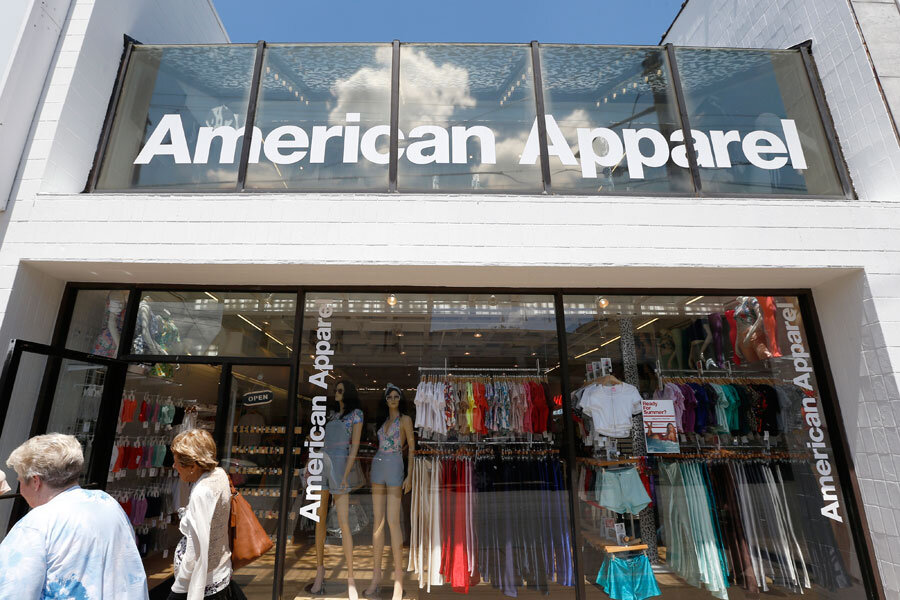American Apparel bankruptcy: Were risqué ads a turnoff for consumers?
Loading...
American Apparel filed for Chapter 11 bankruptcy on Monday after listing $199.3 million in assets and $397.6 million in debt, giving the company a negative book value.
The retailer known for its made-in-the-USA clothing has about 8,500 employees and 230 stores throughout the world. It is not yet clear whether the company plans to lay off any employees or close any stores.
The deal struck with creditors through a debt-for-equity conversion would allow the company to maintain current operations and bondholders to gain shares in the company in place of their current debt.
The company’s shares closed at 11.2 cents Friday after announcing in August it might not have enough capital to sustain operations as normal for 12 months. The Los Angeles-based company has not made a profit since 2009.
Founder and former CEO Dov Charney was fired in Dec. 2014, facing a number of lawsuits accusing him of sexual harassment. Mr. Charney has since sued the company, saying that the accusations are unfounded.
And along with internal drama, American Apparel has faced growing competition from fast-fashion retailers such as H&M, Forever 21, and Zara who can offer young consumers cheap clothing manufactured overseas. Gap has also suffered from fast-fashion competition, announcing in June that the chain will be closing 175 stores, The Christian Science Monitor reported.
But American Apparel’s new CEO Paula Schneider has denied rumors that the company would move production outside of the US to cut down on costs. “We will continue to manufacture in America,” she said. “That’s what the brand is. That’s what it’s about.”
The company has also been dogged for years by concerns over what many consider to be overly sexualized advertising.
In an advertising study published in the American Psychological Association journal in July, a group of psychologists disagree with the assumption that sex sells. “In general, we found violent and sexual programs, and ads with violent or sexual content decreased advertising effectiveness,” they wrote. “Sex and violence do not sell, in fact they may even backfire by impairing memory, attitudes and buying intentions for advertised products.”
Clothing retailer Abercrombie & Fitch has experienced some of the same ills. Once a coveted brand of the 1990s and early 2000s, the stock is down 30 percent this year and is trading at its lowest levels since early 2009. Before retiring in January, CEO Mike Jeffries faced criticism after making comments about only wanting “cool, good-looking people” to wear his company’s clothes.
Reports last year from Nielson and other consulting groups confirm that millennials are “more likely to consider sustainability and social responsibility in their buying decisions than previous generations,” the Guardian reported. In other words, even if retailers like American Apparel and A&F compete on pricing and style, “that doesn’t mean I want to shop at a place that treats other people badly,” one millennial confirmed.
And for American Apparel, allegations against Charney likely amplified a shaky advertising plan. “When the allegations that he was sexually inappropriate arose it turned something that was fun and exciting into something creepy,” Nicky Baird, an analyst at Retail Systems Research, told the Guardian.
Viewers in the UK have been creeped out for awhile now. Britain's Advertising Standards Authority has been banning certain American Apparel adds since 2009, arguing that the retailer's ads "inappropriately sexualized young women."
American Apparel and A&F have both confirmed they will end overly sexy ads in an effort to improve sales.
“By improving our financial footing, we will be able to refocus our business efforts … and create captivating new marketing campaigns that will help drive our business forward,” Ms. Schneider said in a statement Monday.
And while there is no confirmation about what these ‘new marketing campaigns’ will be, they will likely be a reserved take on the company’s risqué past branding.






